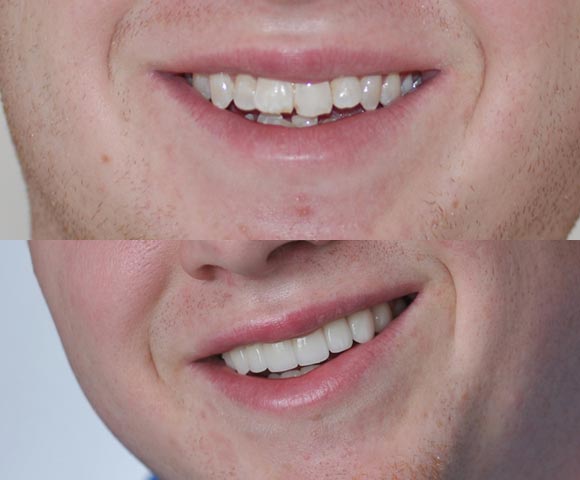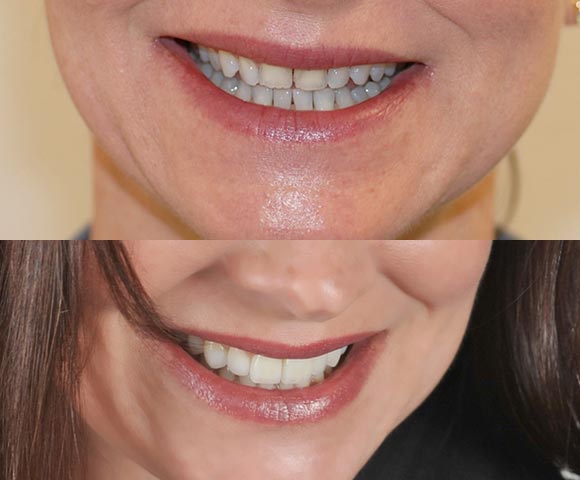Dealing with Your Child's Chipped or Broken Front Teeth
The front teeth, prominently positioned, bear the impact during a fall, affecting one or both of the upper middle front teeth.
This situation offers two possibilities: the damaged tooth may be either a baby or an adult tooth.
If the affected tooth is a baby tooth, there's likely less cause for immediate concern.
However, attention is warranted if the baby tooth shifts, particularly if it moves into the gum, as adult teeth develop above it. Such movement could lead to damage to the emerging adult teeth.
In the event of a chip or break, bonding is a viable repair solution. It's worth noting that around age 6, adult front teeth will naturally erupt, replacing the affected area.
In the event of a chipped or broken tooth, a recommended solution is bonding for repair. However, a comprehensive approach involving root canal treatment and bonding becomes necessary if the pulp or nerve is exposed. Depending on the individual's age, considerations may include the option of tooth extraction.
It's important to stay attentive to any changes, as even if a tooth appears normal initially and an x-ray reveals no issues, a change to a brown color months later could signify a dead or dying nerve (pulp), necessitating prompt root canal treatment.
Save a broken piece of tooth
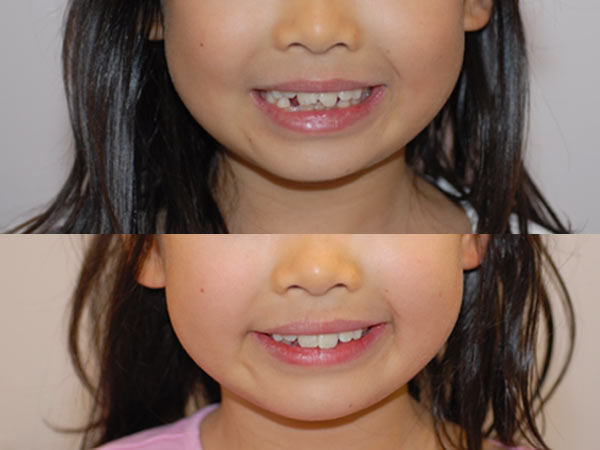
If you have a chipped tooth fragment, bringing it to the dentist can sometimes allow the dentist to bond it back. When the broken portion is unavailable, the dentist can reconstruct the tooth as needed.
Our preferred approach typically involves direct bonding or veneer techniques for children. While lab-processed porcelain veneers are a viable and superior option, they are more expensive, and it's essential to consider that a child's gum line naturally shifts upward over time. Consequently, many cases may necessitate the replacement of porcelain veneers sooner than expected.
Find a dentist you trust who will put your interests first
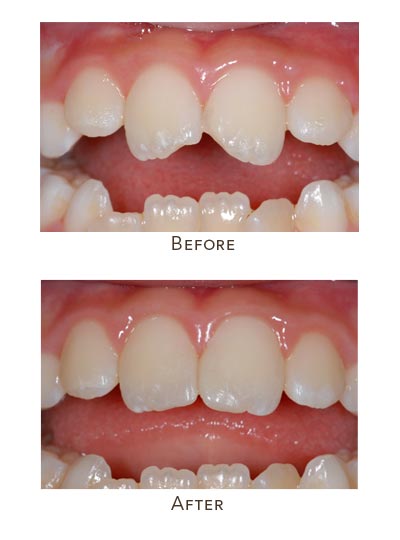
Finding a reliable dentist can be challenging at times. To ensure you choose a responsible practice, seek recommendations from friends, coworkers, or professional dental societies like the American Academy of Cosmetic Dentistry.
Obtaining recommendations is crucial when considering a specific treatment. Feel free to ask questions about the necessity of a proposed treatment plan. If you have lingering doubts, it's advisable to seek a second opinion before proceeding with any treatments.
A heartening example is one patient who sought a second opinion because she had concerns about a treatment plan at another facility. She felt relieved that she had found a dentist she could trust in our office.
Direct veneers before and after
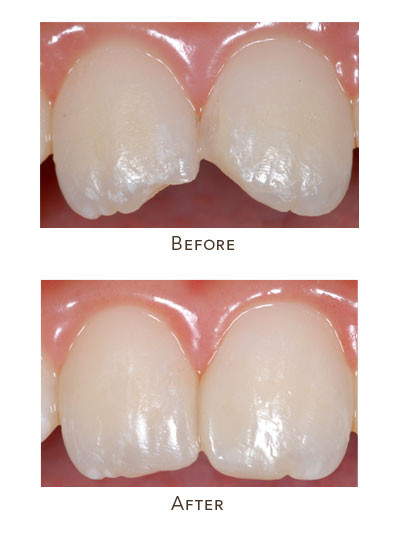
Here is a case for direct bonding or direct veneers to a 7-year-old girl. When she fell, she hit and broke 2 of her upper front teeth. As you can see, all her teeth are not in a final position, and she has more baby teeth in the back. She might need braces in the future. So, lab-processed porcelain veneers are not an option.
She was fortunate to have no nerve (pulp) exposure or tooth shift or movement. We only rebuilt the chipped area by bonding or direct veneers (Composite). Unlike porcelain veneers, dentists have to do the whole procedure, so it is very technique-sensitive, and not all dentists can get excellent, natural-looking results.
The direct bonding on broken teeth case successfully passed the exam at the American Academy of Cosmetic Dentistry (AACD) Accreditation. This case highlights the use of layered bonding to restore and repair teeth.
The comparison shows that the two central teeth exhibit variations in length and alignment upon completion, but they should align seamlessly post-eruption or following orthodontic treatment.
Natural look and strength: Just like your child's original teeth
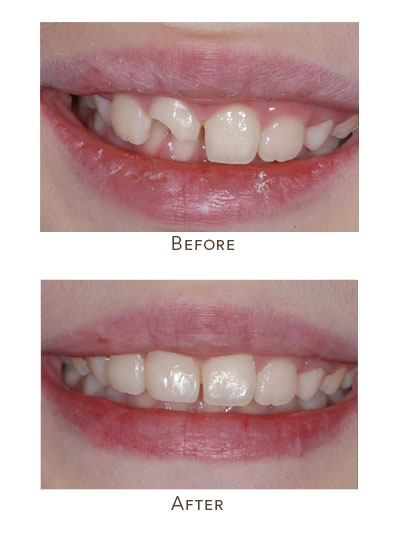
A nine-year-old broke one of her central teeth in half. Luckily, her tooth root was not damaged and had clean breakage, and we could repair it with layered composite bonding.
As these are bonding or direct veneers, necessary adjustments can be quickly made in a single visit without anesthesia. Follow-up appointments usually include a bite check to address potential concerns related to a slightly elevated bite that might lead to chipping of the bonding.
Routine follow-ups during dental cleaning appointments are essential to monitor color changes, mainly brown tones, which signal potential issues with the tooth's nerve. While such complications are less likely with newly erupted adult teeth, the likelihood of requiring root canal treatment increases if they arise.
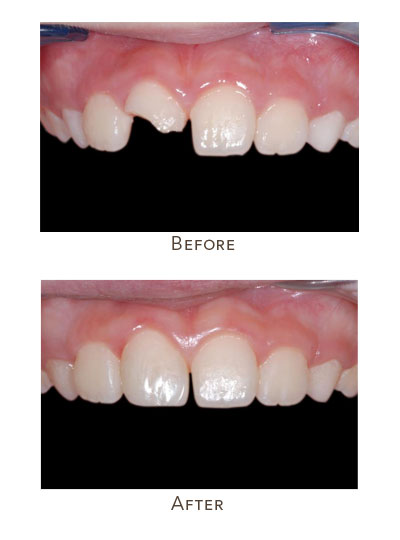
When dealing with dental issues affecting permanent adult teeth, porcelain veneers or crowns are essential treatment options. Dental professionals recommend both, and both offer significant benefits. Providing a detailed comparison, porcelain veneers are custom-made shells that cover the front surface of the teeth, while crowns are caps that cover the entire tooth.
Both treatments enhance the teeth's appearance and functionality, offering long-lasting results. However, in more complex cases where a tooth breaks and the pulp is exposed, specialized attention is required. This may involve root canal therapy to treat the tooth and prevent further damage.
It is crucial to seek professional help for any dental issues, allow your dentist to recommend the most suitable treatment options, and provide the best care possible.
Related articles
About
Dr. Shimizu is an accredited member of the American Academy of Cosmetic Dentistry. There are 486 dental professionals worldwide (Only four in Houston) as of 2024 who have achieved this prestigious honor.
